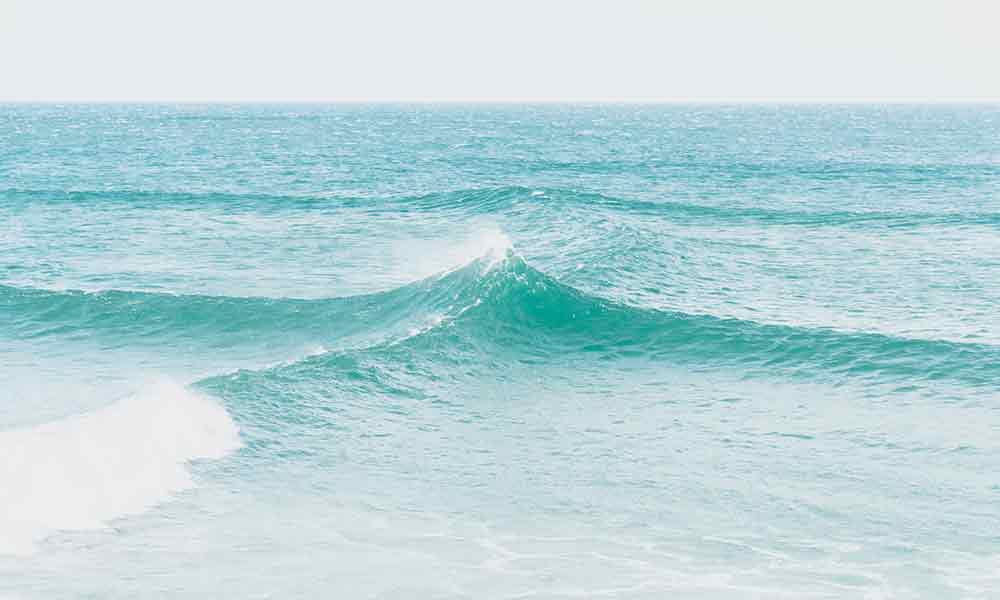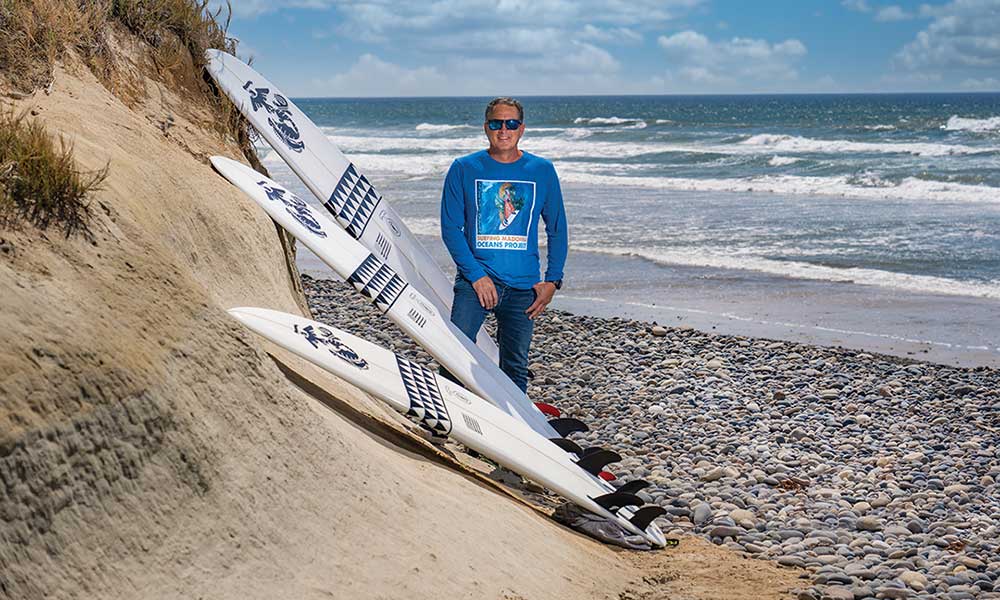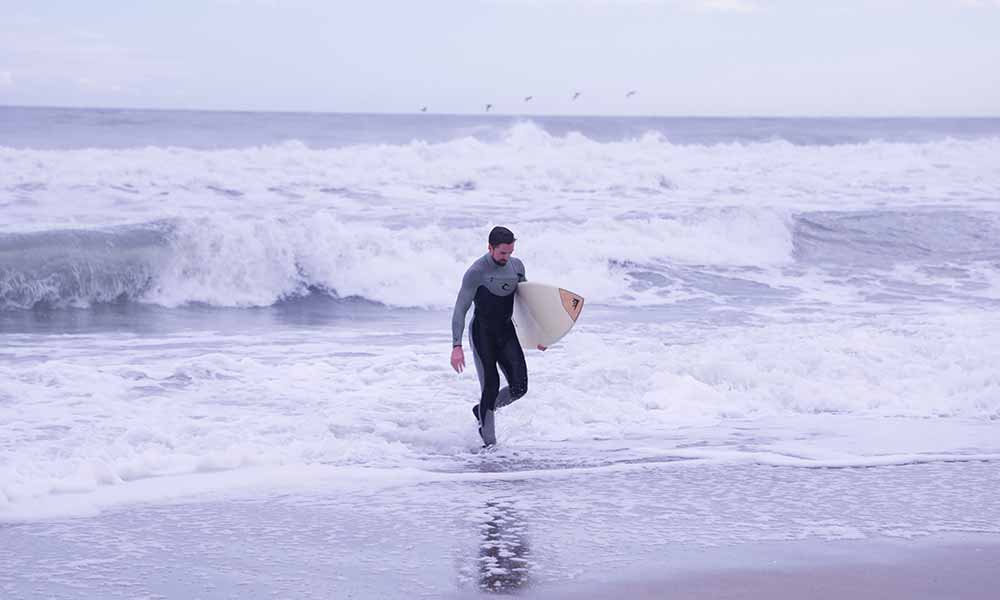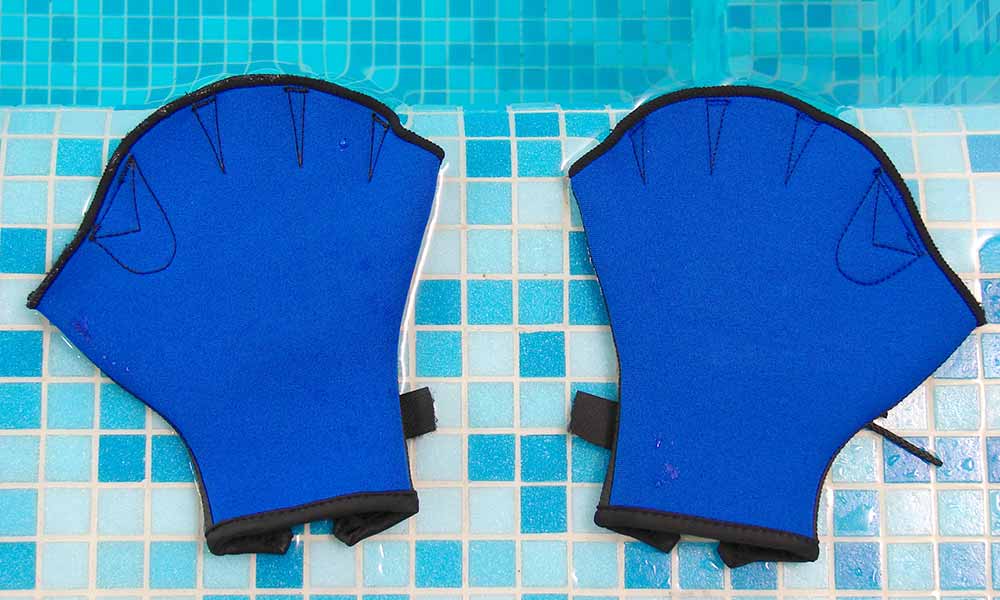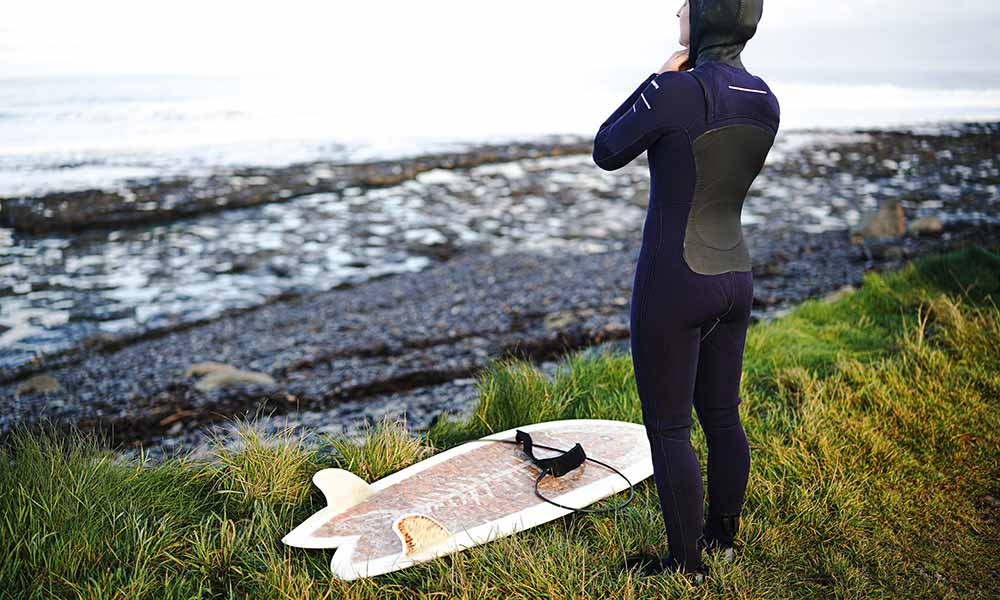Waves are influenced by wind, tides, and swell, and while the ocean floor also plays a role, it’s minor at best.
Simply put, in deep water, the sea floor is unable to influence the formation of waves on the surface.
But this changes in shallow water, at which point the structure of the floor (known as “bathymetry”, from the Greek word for “deep”) determines the nature of the breaking waves.
The bathymetry impacts the wave through a process known as refraction.
Let’s explore what happens to an ocean wave when it is refracted.
Ocean Wave Refraction Defined In A Nutshell
Ocean wave refraction occurs when ocean waves approach a coastline or a change in the ocean floor’s depth.
As waves encounter variations in the ocean floor’s contour, their speed and direction change, resulting in a bending of the wave fronts. This bending is known as refraction.
Refraction happens due to the change in wave speed as the waves move from deeper water to shallower water or vice versa.
When waves approach shallower areas, their lower portion encounters friction with the seabed, causing the waves to slow down.
Meanwhile, the upper portion of the waves continues to move at a faster speed, leading to a change in the direction of the wave crest.
This bending effect can cause waves to converge or diverge along the coastline.
Ocean Wave Refraction Explained: what causes a wave to refract & Bend
This video gives an example of the behavior of ocean wave refraction.
As waves travel over the sea floor at different speeds, they bend and contort, with the bend essentially turning toward its slowest point.
And because shallower water creates slower waves, they bend or “refract” toward that shallow water.
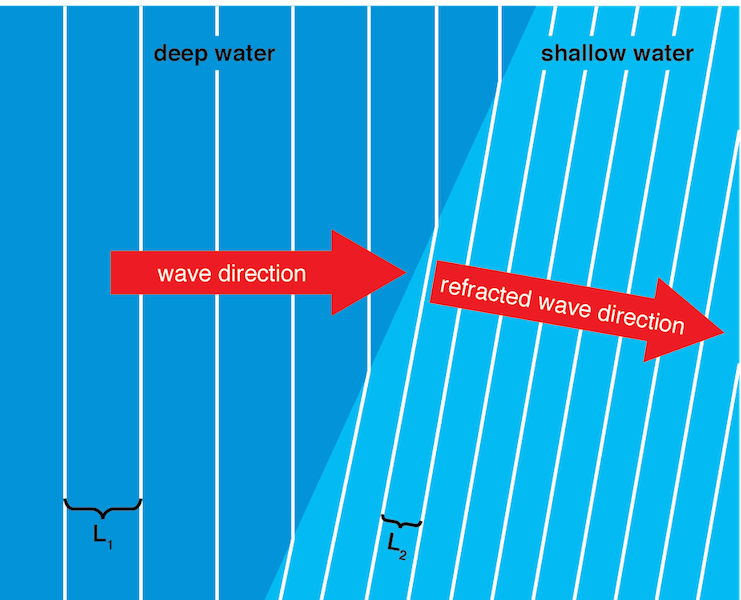
This diagram of ocean wave refraction shows how wave energy is pushed in a different direction when ocean swell energy meets shallow water. Image from hawaii.edu.
This is wave refraction, and it means that the shape of the waves above the surface can be heavily dependent on the topography below the surface.
The unique bathymetry of different surf spots creates equally unique breaking waves.
At Nazare, for instance, the waves are pushed into an A-frame, sending immense wave energy upwards to create monster wave crests and produce some of the biggest surf on the planet.
Ocean wave refraction can also be caused by the shape of a bay or coastline where waves diverge because of refraction which results in calmer ocean water in the bay and rougher water at the land points or headlands that jut out from the uneven coastline.
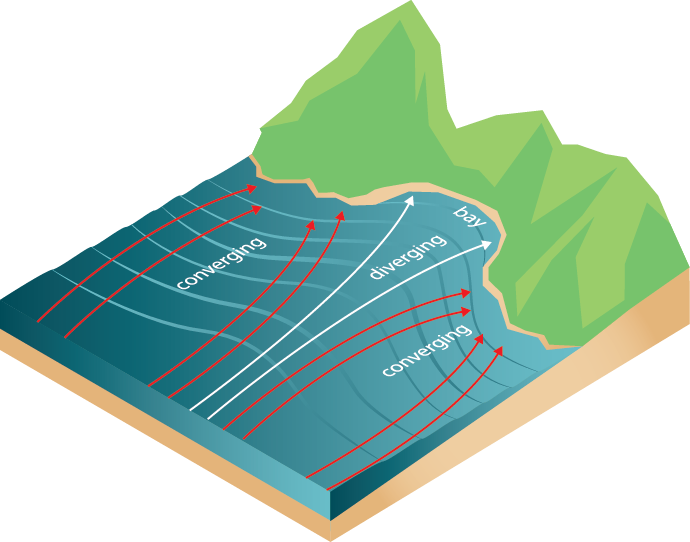
This diagram of ocean wave refraction shows how wave energy is pushed in a different direction when ocean swell energy converges and concentrates wave energy on the headlands that reside on either side of the bay . Image from hawaii.edu.
Two Examples of Wave Refraction In California
You can find two examples of ocean wave refraction in California at 1) The Wedge in Newport Beach and 2) at South Ocean Beach in San Francisco.
The Wedge In Newport Beach, California
See the results of ocean wave refraction at the Wedge in Newport Beach, CA.
In the summertime, south swells run north and break at beaches that are south facing in California.
Newport Beach is one of those beaches.
However, Newport Beach has a very long jetty that extends out into the ocean from the inlet/bay at a surf spot known as The Wedge.
The south swell push north at The Wedge, some of which hit the beach directly, but some of the swell hits the jetty first and combines with the swell that is aiming to land on the beach.
The two swells combine to form one massive, mutant wave that can reach upwards of 20 feet and can break in a just a few feet of water.
Surfers, bodyboarders and bodysurfers test their skills on these waves knowing that 9 out of 10 times the wave will closeout on them.
South Ocean Beach In San Francisco, California
See the results of ocean wave refraction at San Francisco’s Ocean Beach, CA.
When winter arrives, swells from Alaska travel south down the coast of California.
South Ocean Beach, located just southwest of the Golden Gate Bridge, is open to all open-ocean swells that run north to south.
It is one big swell magnet.
The winter swell energy that hits Ocean Beach in San Francisco bounces off the coastline and collects again at South Ocean Beach all but a quarter to a half mile away resulting with waves that can be twice the size as those that break at neighboring Ocean Beach.
That’s right, a 5 to 6 foot wave at Ocean Beach could easily be 10 feet a half mile away at South Ocean Beach.
Focusing and Defocusing
There are two main factors to consider when talking about ocean wave refraction: focusing and defocusing.
Focusing ocean wave refraction can occur when the swell reaches a jutting coral reef with deep water on either side.
The wave bends inwards and concentrates all of the energy into a central spot, similar to what we see at Nazare, as well as the unforgiving breaks seen at Teahupoo in Tahiti.
Defocusing occurs when the wave rapidly approaches a shallow water depth, such as a bay.
At this point, it begins to slow down.
The wave changes and starts to bend outwards.
Depending on the bathymetry, some locations may produce both types of wave refraction.

